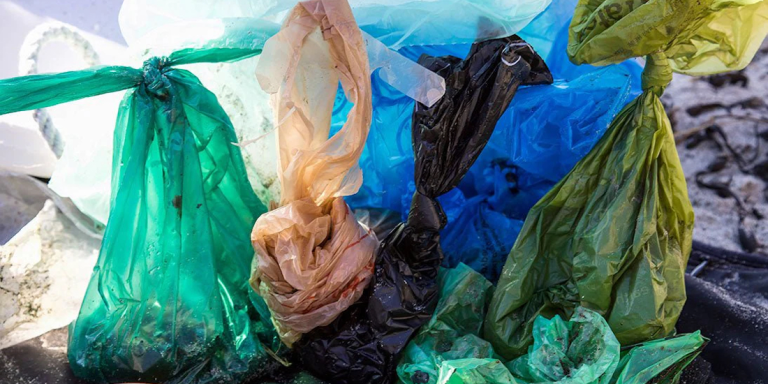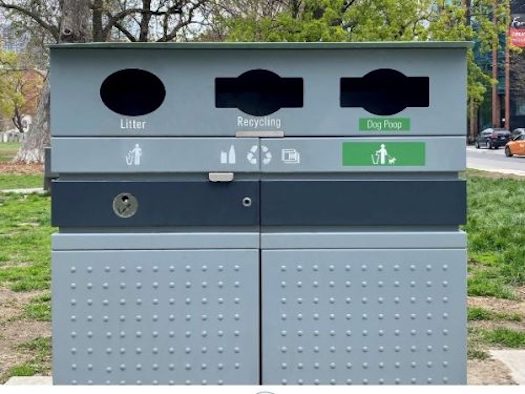
Our Pets’ Waste Creates a Hidden Environmental Crisis. Rethinking Dog Walking Habits Can Help New Yorkers and Their Dogs Go Greener.
New York, N.Y. — Walking along the East River on Roosevelt Island in New York City offers remarkable moments of city serenity — birds above, ferries gliding by, skyscrapers reflected on slow-moving water.

Yet, with a dozen dogs to manage for my family, the most pungent daily reminder of urban life is not the scent of saltwater or fresh grass.
It is plastic, lined with waste, multiplying in my hands as I do my best to keep city parks clean.
With every crouch and scoop, the count rises. We go through dozens of bags every day.
Thanks to my training as a former Cub Scout — and a certain sense of civic pride — I even scoop up bags for the many careless owners who leave behind canine contributions.
Yet I know I am not alone: more than one million pet poop bags are dumped into landfills in the U.S. every single day.
What is this doing to our planet, and can we really walk our dogs sustainably?

Growing Pile: A Crisis Hiding in Plain Sight
Dog ownership in the U.S. has steadily increased in urban centers like New York City.
In the New York metropolitan area alone, this translates to hundreds of thousands of daily dog-walking routines.
Multiply each walk by two — morning and evening — and the plastic-wrapped results are staggering.
A typical dog creates 275 pounds of waste a year.
If each outing requires a plastic bag, and each pet walks twice daily, the annual number of bags just for New York City alone can reach the tens of millions.
And unlike other wastes that break down rapidly, standard plastic bags may last centuries in landfills, creating an ever-growing, invisible mound beneath the city.

“Biodegradable” Bags: A Solution or Greenwashing?
If tossing millions of plastic bags seems shocking, the rise of “biodegradable” and “compostable” alternatives on shelves may seem like a solution. In reality, the difference is complicated.
Federal guidelines in the U.S. do not regulate these terms consistently. Many so-called “biodegradable” bags simply break into smaller plastic pieces — microplastics that can leach into the soil and water.
Only industrial-grade compostable bags made from starch-based polymers can break down in commercial facilities set at the right temperature and humidity.
Yet, in New York City, almost no dog waste is actually sent to such composting centers. Most bags, “green” or not, end up alongside other municipal trash.
Rethinking Our Responsibility: Why Cleaning Up Still Matters
While the numbers can seem overwhelming, cleaning up after your pet is still essential. Dog waste is rife with parasites and bacteria that threaten public health.

E. coli and other pathogens can seep into groundwater and waterways, including the East River, if left to decompose in parks.
When New Yorkers pick up after their pets — regardless of bag material — they help protect children playing nearby, keep shoes clean, and safeguard the ecosystem.
But the environmental issue remains unsolved. Some responsible owners, haunted by the volume of waste, have begun to test new approaches.
Flushable bag products, for homes equipped with adequate plumbing, can reduce landfill use.
A handful of composting services accept pet waste in small bins, though these are rare and sometimes costly. For now, the greater shift must come from widespread engagement and municipal policy.
Everyday Actions: What Can Pet Owners Do?

Real change requires both individual and community efforts. Here’s how dog lovers in New York City and beyond can lighten their environmental impact:
- Seek out verified compostable bags that meet ASTM D6400 or EN 13432 standards, not just “biodegradable” claims.
- Encourage local officials to expand green waste programs to accept pet waste where possible.
- Place pet waste in dedicated collection bins in parks — several cities in the E.U. have piloted such programs.
- Avoid flushing pet waste if uncertain about pipes or municipal guidelines; never compost dog waste at home for food gardens, due to parasite risk.
- Advocate for more pet waste disposal sites, signage, and education.
The U.S. pet industry — and municipal waste managers — cannot solve this alone. Dog owners, veterinarians, environmental scientists, and city planners must collaborate to develop meaningful solutions.
Toward a Greener Stroll: Learning From Global Cities

Globally, a few pioneering cities lead the way. In San Francisco, a city composting program diverts food and organic waste (though not yet pet waste).
In Toronto, municipal composters pilot dog-waste composting at dog parks (image, left).
In London and Berlin, public campaigns promote “pick up and dispose” culture, and funding has gone to R&D of biodegradable bags.
Could New York City go beyond the minimum?
Dog owners walking along the East River — and across its five boroughs — can urge leaders to build a citywide solution, just as locals advocate for recycling initiatives and improved park facilities.
Each small action, multiplied by our vast canine-loving community, has the potential to transform this hidden waste crisis.
Summary
More than a million pet poop bags end up in landfills in the United States every day, contributing to a hidden environmental crisis. With New York City dog owners routinely filling dozens of bags, questions arise about sustainable alternatives. Biodegradable options offer limited relief since most waste still heads to landfills. Responsible pet ownership, seeking compostable materials, and policy reforms together can help lighten the environmental load — but solutions will require citywide cooperation and innovation.
#PetWasteCrisis #NYCDogOwners #GreenDogWalks #SustainablePetCare #CompostablePetBags
TAGS: dog waste, landfill, New York City, biodegradable, compostable, East River,
Roosevelt Island, pet ownership, environmental impact, plastic pollution, green living
